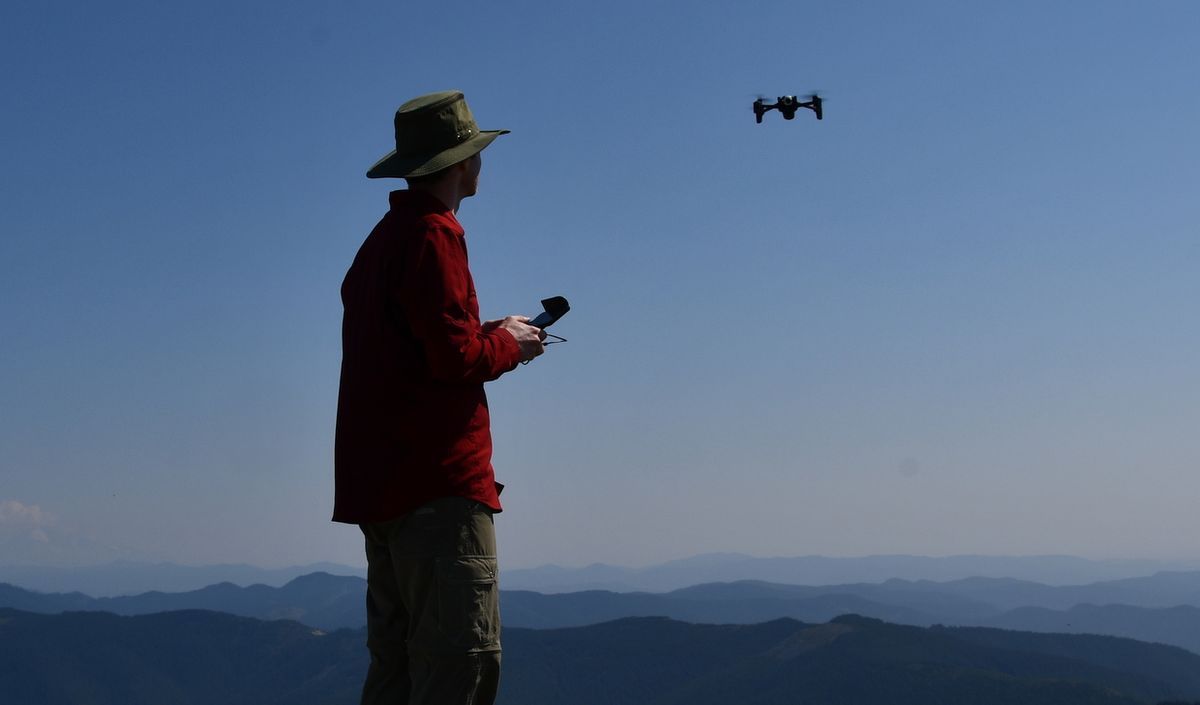For years, the U.S. Federal Aviation Administration (FAA) has been shuffling its way towards some semblance of regulation of the enormous number of drones now in the hands of recreational pilots in the United States. The fact that anyone can run out and buy a cheap drone at a nearby store, charge the battery, and launch the thing has got to be stupendously annoying for the FAA. One of their jobs, after all, is to impress upon people that drone owners doing something like that is not always a sensible thing to do.
Perhaps coming to terms with its unfortunate (albeit quite necessary) role as a bit of a buzzkill, the FAA has been desperately trying to find ways of forcing recreational drone pilots to at least read the rules they're supposed to be following, without resorting to a burdensome new regulatory infrastructure. Their strategy seems to be something like, “we're going to require drone pilots to do a couple of things, but those things will be so painless that nobody can possibly object." The first of those things is registering your drone if it weighs more than 0.55 pound, and the second of those things, just announced this week, is the TRUST testing requirement for all recreational drone pilots who fly drones.
Everyone passes with a 100 percent A+
The FAA's TRUST Test, which stands for The Recreational U(A)S Safety Test… Test… is mandatory for all pilots flying drones recreationally, no matter the size or weight of the drone being flown. Understanding how annoying this could potentially be, the FAA (to its credit) is asking for very nearly the minimal amount possible from pilots: TRUST is online, it's free, it takes less than 30 minutes start to finish, the certificate it provides you with never expires, it's multiple choice, and it's impossible to fail. By impossible to fail, I mean literally impossible. It's not just that the questions are easy (and they are very, very easy), but if you miss one, you're immediately presented with an option to try again, and you can't proceed without answering correctly. Everyone passes with a 100 percent A+.
About half of the test is just providing you with information, and the other half is asking questions about the information you've just been provided with. If you've been flying a drone recreationally already, it's all stuff you should know (how to make sure you're not flying in restricted airspace, that sort of thing) and if you don't know the answers already, you really shouldn't have been flying. Note that if you're flying in any capacity that's not strictly for fun (including work where you do get paid, work where you don't get paid, community journalism, and so on), you'll still need to get your Part 107 license.
The FAA isn't administering the test itself—there are a bunch of FAA Approved Test Administrators, each of which is authorized to offer TRUST and provide certification through their websites. Folks like The Academy of Model Aeronautics, The Boy Scouts of America, and Pilot Institute are just some of the organizations through which you can access TRUST, and the complete list is here. Each one will give you the same test. Wherever you go, you won't have to register or provide any information about yourself or your drones, with the exception of your name right at the end of the test so that they can put it on your digital certificate. You're supposed to keep the certificate on you when you fly (a digital copy is fine), and it's worth remembering that law enforcement is allowed to ask you for it.
After you've aced TRUST, it's important to remember all of the other stuff you have to do to safely and legally fly a recreational drone. Notably, TRUST is separate from registration—you have to complete this test before you fly, full stop, whether your drone is registered or not. Also, you'll need to:
- Follow the safety guidelines of a Community Based Organization (CBO)
- Keep your drone in your visual line of sight (VLOS)
- Always give way and never interfere with manned aircraft
- Get an airspace authorization before flying in controlled airspace
- Do not fly higher than 122 m (400 feet) above the ground in uncontrolled airspace
- Mark your drone with its registration number, if it's over 0.55 pound
This is all easy stuff. The question is whether the FAA can convince people to actually do it. There's really not all that much preventing drone pilots from totally ignoring everything that the FAA is trying to do here, except for some nebulous potential penalties if you do something especially bad and get caught. Living within the Washington D.C. no-fly zone, I see plenty of drones, and there's no way of telling whether the pilots don't know about the rules that they're breaking, or don't care. Personally, I'm a huge proponent of safe and responsible drone use, and I very much hope that TRUST will make a difference.
Evan Ackerman is a senior editor at IEEE Spectrum. Since 2007, he has written over 6,000 articles on robotics and technology. He has a degree in Martian geology and is excellent at playing bagpipes.




